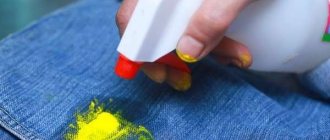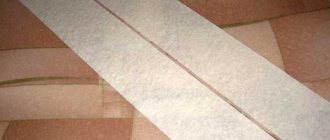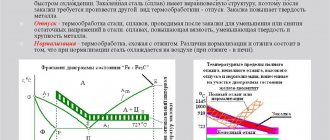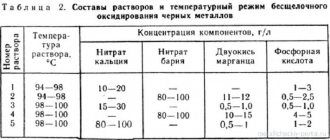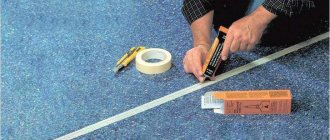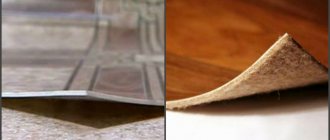Judging by numerous reviews, very often home craftsmen have to glue things made of aluminum. This material is widely used because it is quite durable and resistant to external influences. However, this metal does not have adhesive properties. As a result, if you connect aluminum objects to each other, an oxide film will form on their surface and gluing will be difficult. This explains why many beginners are interested in the question of how to glue aluminum to aluminum.
According to experienced craftsmen, to ensure a high-quality connection, you need to purchase special glue. Unlike other adhesive mixtures, its composition is supplemented with special additives, the task of which is to prevent the formation of an oxide film. You will learn how to glue aluminum to aluminum in this article.
How can you glue aluminum and glass?
How and with what to glue metal to glass
- Two-component epoxy adhesive. ...
- Silicone with high thermal stability. ...
- A product called Moment Crystal. ...
- Automotive adhesive resembles rubber in its basic characteristics.
Interesting materials:
Where can I plant a linden tree in my dacha? Where is the shift button on the keyboard? Where is the fn button on a PC keyboard? Where on the Win keyboard? Where is the Win button on the laptop? Where is the taskbar on the desktop? Where is the country of manufacture indicated on the tires? Where is the device manager on xp? Where are the logs? Where is the desktop wallpaper?
About gluing methods
Despite the presence of undeniable advantages, thanks to which aluminum has gained great popularity, this metal also has a disadvantage. It consists in the fact that during fastening the master may have difficulties. Due to the fact that aluminum is quite soft, conventional bolted connections will not work. Professionals connect aluminum parts together by welding.
However, this method requires argon and complex equipment, which can be operated by a qualified specialist. Therefore, cold welding is most often used. This technique provides two connection methods. The first uses the principle of diffusion. At the moment of connection of two solid surfaces under the influence of pressure, the interpenetration of their molecules occurs. In other words, they mix with each other. This method is quite complex and is used in enterprises. The second connection method is gluing using special means, which will be discussed below.
Types of resin adhesives
Depending on the conditions under which curing occurs, epoxy resin adhesives are classified into two categories:
- Products that can harden at temperatures above 1 thousand degrees. Scope of application: industrial enterprises.
- Cold hardening compositions. Adhesives can harden at a temperature of no more than + 350 degrees.
When using two-component epoxy adhesives, it is recommended to add hardeners in different proportions. What glue is used to glue aluminum to aluminum? More on this below.
Aluminum adhesive - answers to important questions
Therefore, it must either be welded or glued.
Since welding can only be done by professionals, aluminum glue is an excellent household option. But only special glue is suitable for this metal. Any adhesive intended for aluminum must contain alkalis and acids that destroy its oxide film and increase adhesion, ensuring a strong connection.
- Mastix aluminum adhesive . It is used to glue aluminum, seal containers and joints, and repair non-ferrous and ferrous metals, wood, ceramics and plastic in any combination. Even at low temperatures, as well as on greasy and damp surfaces, it quickly and reliably glues parts. This is a heat-resistant adhesive for aluminum, so products glued with it can be used at very low and extremely high temperatures (from -60 to +150 degrees). The cost of a 55 g tube: 33 rubles.
- Cold welding ASTROhim ACE-9305. This is a reliable adhesive for instant repairs, which can be useful in an emergency to fix a breakdown. Its use ensures strong bonding of aluminum and its alloys, as well as restoration of broken or lost fragments, including threads. Temperature range: from -60 to +150 degrees Celsius. Packaging cost: 82 rubles.
- Cosmopur 819. A one-component polyurethane adhesive solution that can be used to bond aluminum. It produces a viscous and elastic seam between the surfaces being bonded and is used for filling gaps and gluing corners of aluminum structures intended for doors and windows. Also designed to work with assembly and structural connections. Solvents are not included in its composition. The cost of a 310 ml package: 456 rubles.
- Moment Epoxy Metal. A two-component adhesive that guarantees the bonding of aluminum, steel, copper, iron and many other metal products to each other and in combination with stone, concrete, marble, organic glass and other materials. Suitable for filling cracks and gaps between surfaces. The cost of a 50 ml package: 320 rubles.
Aluminum adhesive: selection criteria, step-by-step instructions for use
Aluminum is one of the most common metals in industry. It is highly durable and resistant to external factors. However, aluminum does not have adhesive qualities.
For this reason, it is necessary to either weld this metal or glue it. How to glue aluminum is a fairly common question. After all, in order to weld this metal, you will need special equipment, as well as skills. However, in order to glue aluminum plates together, simple glue will not be enough.
Any adhesive mixture for aluminum must contain acids, which should destroy the metal oxide film and increase adhesion.
Mechanical processing of metal in this case is not enough. Using specialized adhesive mixtures, a reliable connection is ensured.
Useful tips
Craftsmen advise following some useful tips when buying glue and carrying out work:
- Two-component compounds cope with the connection of aluminum elements, but if it is necessary to glue aluminum alloys, then it is better to use products containing methyl acrylate.
- Bonding of aluminum occurs due to the splitting of the coating by the components contained in a special product.
- If the design provides for use for storing food and water, then you cannot use products containing epoxy resins.
Gas welding can cause metal oxidation, which does not occur when using adhesives.
We recommend videos on the topic:
About polyurethane glue
For those who do not know how to glue aluminum together, we can recommend a polyurethane-based mixture. This glue comes in one- and two-component types. In the first case, the adhesive composition is represented by polyurethane alone. No solvent provided. These adhesives are applied to the exposed parts of the products being joined. Before gluing, the surfaces are pre-moistened with water. Since two-component products contain a hardener, it is not necessary to treat aluminum with water. According to experts, two-component products are characterized by increased ductility and heat resistance. The connections are very strong. In addition, they are not affected by oil, fungi and mold.
Our recommendations
Advice from professionals will help you choose the right product for gluing aluminum. The composition, which is correctly selected, will ensure reliable bonding for a long time.
- To glue aluminum structures, it is enough to choose an adhesive based on epoxy resin. If it is necessary to glue aluminum alloys, then in this case it is recommended to use glue that contains methyl acrylate.
- To reliably glue aluminum, the glue must contain special acids. They allow the oxide film to be broken down. This will greatly improve adhesion.
- It is worth noting that it is strictly forbidden to use glue that is based on epoxy resin if water or food will be stored in this tank in the future.
Remember that if you glue a broken item together, it will last much longer than after welding, which leads to oxidation. In addition, the cost for this action will be much lower than for welding.
Conditions of use
Using heat-resistant compounds, if desired, you can glue not only metal, but also such durable and hard materials as glass, ceramics and brick. After gluing the workpieces under conditions of strong heating and subsequent sharp cooling, the fastening properties of such adhesives practically do not change.
The advantage of heat-resistant glue allows it to be used in various construction and repair operations:
construction of stoves and fireplace structures;
- facing stoves and walls with ceramic tiles;
- laying the so-called “warm floor”;
- repair of glass and metal products.
The performance characteristics of heat-resistant adhesives for metal depend on the set of fillers and other components they contain.
Thus, the presence of sand, cement and special plasticizers in the glue ensures its resistance to mechanical deformation. And the introduction of special synthetic additives significantly increases the heat-resistant qualities of the fastening agent, which perfectly glues metals at elevated temperatures.
General operating rules
Fixing aluminum parts with glue is quite easy. It is recommended to adhere to the basic recommendations.
Surface preparation
It is recommended to perform all manipulations with glue in a well-ventilated area. It is recommended to wear gloves and a respirator.
Adhesive compositions often contain hazardous components that can cause irritation to the eyes and respiratory system.
Before sanding surfaces with sandpaper, it is worth cleaning them from dust, grease stains and dirt. This can be done with a stiff brush or brush. To prepare surfaces for fixation, do the following:
- Remove fragments of rust and dirt. It is recommended to do this using sandpaper. It is recommended to use fine-grained.
- Remove greasy stains from the surface. To do this, treat it with acetone. If there is fat on the parts, adhesion is reduced by 20%.
- Wait until the treated surface dries.
Sealant (cold welding) Anles Uniplast-universal 20g aluminum
Epoxy plasticine, supercompound. Anles Uniplast-universal is a cold welding based on aluminum. Used for fastening workpieces made of various metals (non-ferrous and ferrous), restoring threads, repairing plumbing pipes and fuel storage tanks. This is a two-component composition, which consists of a hardener and epoxy resin. The base is further strengthened with aluminum or bronze dust.
Stages of working with Anles Uniplast-universal:
- The working surface is cleaned of dirt and rust. Processed with sandpaper. Then the surface is degreased and dried.
- The hardener and base must be cut in equal parts, mixed until a homogeneous mass is obtained and applied to the parts to be glued.
- Secure the gluing area with a rope or place it under a weight.
It is recommended to continue work after 24 hours. Has high electrical insulating properties.
- The viability of the finished composition is about 25 minutes. Temperature +20° C.
- The maximum strength of the connection occurs after a day.
- Cold welding is resistant to prolonged exposure to water, gasoline and oils.
- Withstands temperatures from -40 to +120° C.
You need to work with this glue in a well-ventilated area and away from sources of fire.
Deformation welding technology features
When aluminum pieces are joined at room temperature, this method is called “cold welding.” In addition to the use of adhesive compositions, which were described above, there is the principle of deformation. This technology consists of several key stages:
- Aluminum surfaces are initially degreased.
- Next, the workpieces are brought as close as possible and compressed under pressure.
During the compression process, the outer oxidized layer is destroyed. Intermolecular bonds are formed between the crystal lattices of the metal. This ensures a reliable connection.
This technology can be used to bond other non-ferrous metals. Pressure can be applied uniformly or vibration can be added. Based on deformation technology, three connection methods can be distinguished, which will be described in more detail below.
How to use the mixtures?
Those who do not know how to glue aluminum at home should follow the following sequence of actions:
- Rust and dirt are removed from the surface of the joined areas using fine-grained sandpaper or a brush.
- Next, the surfaces are treated with acetone.
- After this, you need to wait a while for the area to dry.
- Mix glue and hardener in a separate container. You should get a homogeneous viscous mass.
- The adhesive mixture must be applied to the surface in the form of dots or thin strips. Then the parts are pressed tightly against each other. They need to be fixed in this position and left for 15-20 minutes.
If you have any excess, you can remove it with a rag previously soaked in solvent.
